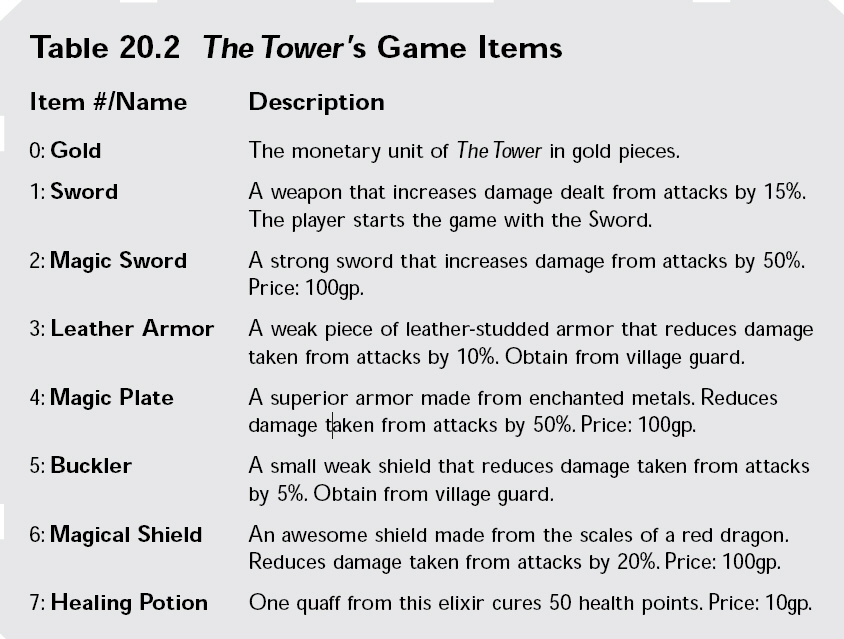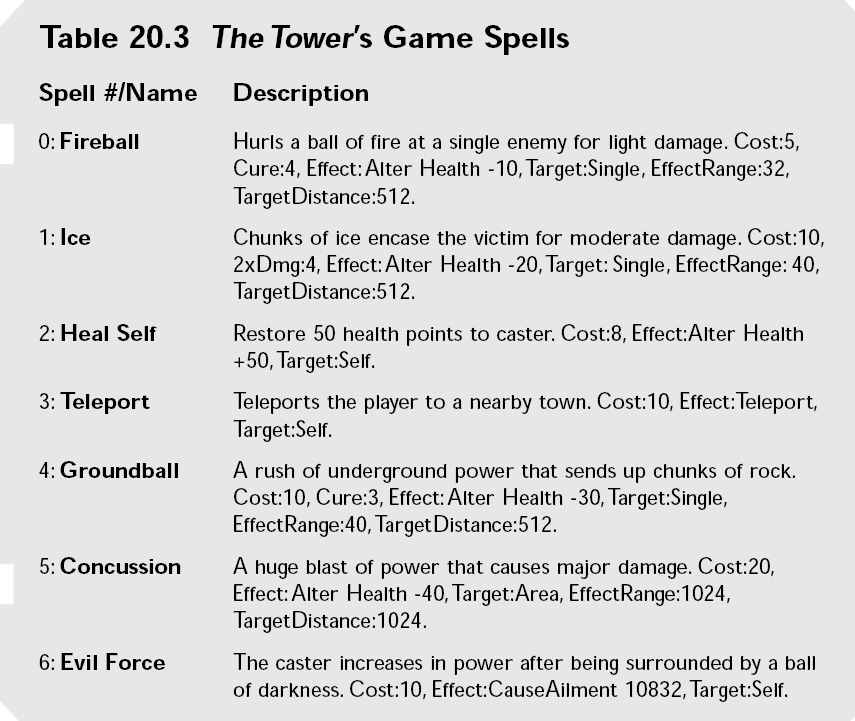Assigning Characters
During the design of the sample
game, it is necessary to assign each character a
unique identification number. For example, the player is assigned the
identification
#0, whereas the village elder uses the identification #1. By assigning these
identification numbers, the script engine knows which characters to use for
performing
certain actions, such as displaying dialogue or tracking flags in order to
alter in–game-play. These pre-assigned identification numbers are as follows:
0: Player character
1: Village elder
2: Village guard
3: Village shopkeeper
4: Monster in village at start of game
5: Demon in tower who runs to warn the Evil Lord
6: Granite, the rock demon
7: Evil Lord
The only characters in the list
shown here that do not have identification numbers
assigned are the monsters the player encounters throughout the game. You assign
these monsters identification numbers from 256 and up—there’s really no reason
at this point to predetermine these numbers. Think of the numbering order as a
first-come, first-serve order of assigning monsters’ identification numbers.
Creating the Items and
Spells
The Tower has eight items, each
of which is shown in Table 20.2. Only a few of the
items are for sale; the player receives the rest from other characters. Items
with a
price listed (shown by a number followed by gp) are for sale in the village
level.

You use seven spells in the
sample game—numbered from 0 to 6. Table 20.3 lists
and describes each spell. You can also confer with the Master Spell List Editor
program for the specifics on each spell. The game's spells are contained in the
Game.msl file.

To better understand the spells
in Table 20.3, use the following legend:
■ Cost. This is the amount of mana points it takes to cast a spell.
■ Cure. A spell can cure characters with a specific class assigned to them. If a
cure class is listed, casting the spell on a character instead heals that
character
for half the amount of intended damage.
■ 2xDmg. Much like cure, this is the class of character to which the spells
cause twice as much damage as the spell normally would cause. For example,
an ice spell will cause twice the normal amount of damage to a fire-based
monster, such as the Evil Lord.
■ Effect. This is the effect of the spell on the intended character. The four
effects used in The Tower are alter health, teleport, cure ailment, and cause
ailment. Each effect (except teleport) is followed by a number that represents
the modifier value. Alter health is the amount to subtract or add to the
target’s
health points. Cure ailment and cause ailment refer to the bit-flags used.
■ Target. This is the spell’s target type, which can be a single character
(Single), self (the character casting the spell), or an area.
■ EffectRange. This is the radius in which the spell’s effect hits nearby
targets.
■ TargetDistance. This is the maximum distance the spell will travel to hit a
target
character. The character casting the spell must be within this distance to
cast the spell at a target character.
Some of the preceding spells
are unique to certain characters. For example, the
Evil Force spell is used only by the Evil Lord—he casts it upon himself to
increase
his power (specifically raising his statistics and increasing his speed).
Consult the
game’s master character list to determine which characters know which
spells.
That’s about it for the game’s
contents, spells, or characters, so now you can turn
your attention to the game’s scripts.